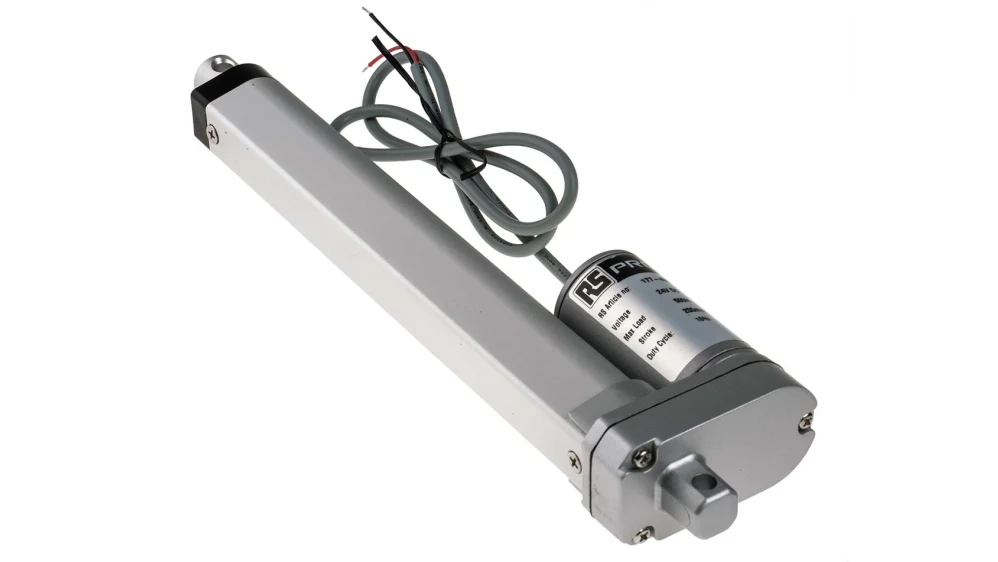Imagine how much smoother your operations could be when everything runs like clockwork, delivering reliable results day after day. At ETI Systems, we believe in the power of precision-engineered actuators to make that happen.
Actuators are key players in creating a safer workspace packed with features that help prevent failures and keep everyone secure, which is why we engineer electric valve actuators at ETI Systems that move productivity forward.
In this guide, we will discuss how to select the best actuator for your application, what features to consider, and why our solutions are trusted across various industries.

An actuator is a component that translates your system’s commands into physical actions. When you send a command to your automation system, let’s say you want to open a valve or position a robotic arm, the actuator takes that instruction and performs the necessary movement.
In industrial automation, this translation is what keeps systems running smoothly. From managing fluid control to ensuring equipment safety, actuators provide the muscle behind every coordinated move, executing commands quickly, accurately, and repeatedly, no matter how complex the process.
Our actuators are widely used in:
Different environments require specific attributes, force, speed, accuracy, and sealing, and we design our actuators to fulfill all these needs.
Electric valve actuators are becoming the standard across many industries for a reason. Our actuators are designed to provide the following advantages:
If you need precise positioning, quiet operation, or seamless digital integration, our electric actuators offer reliable performance.
The actuator you select should fit the mechanical, environmental, and functional requirements of your system. Here’s what we recommend evaluating:
Our rotary actuators are ideal for quarter-turn valves, such as ball or butterfly types. For gate or globe valves, we offer linear actuators designed for straight-stroke movement. Choosing the wrong motion type can impact performance and shorten equipment life.
Every valve requires a certain amount of force to operate. Undersizing leads to stalls; oversizing increases cost and system stress. We provide clear torque charts and model recommendations for accurate selection.
Is your system intermittent or continuous? Our actuators are rated for different duty cycles to ensure long-term performance without overheating or degradation.
We offer models with:
Whether your system operates in a clean lab or a dusty, high-vibration environment, we will assist you in finding an actuator that is durable and specifically designed for your needs.
Modern systems require data. Our actuators come with built-in potentiometers or can be customized for analog, digital, or smart feedback systems. This provides real-time positioning and diagnostics with minimal wiring hassle.
Our electric valve actuators are designed for optimal performance in your operations and systems. Each model undergoes strict testing to ensure it meets the demands of continuous use, challenging environments, and seamless integration with modern control platforms. Here’s how our models stand out in practical applications:
Each unit is built to 2015 quality standards, compliant with RoHS and REACH regulations, and engineered for a long service life. Our products make upgrading an older system or creating a new automation platform easier, offering flexible configurations and proven reliability.
Every application is unique and may not fit a standard format. That’s why we provide:
We work with OEMs and system integrators to ensure our actuators drop in cleanly and perform flawlessly.
Our actuators are trusted in:
Engineers depend on us because we support every component with expert assistance and application insights.
Choosing the right actuator is crucial for ensuring your system responds accurately now and in the years to come. At ETI Systems, we understand the challenges you face, including high cycle demands, unpredictable environments, and the need to integrate with real-world systems. That’s why we design actuators that consistently meet these requirements with reliability and clarity.
Discover our full range of electric valve actuators and get expert advice tailored to your system’s exact requirements. Contact ETI Systems today to request a quote or speak directly with our in-house engineering team.
It converts electrical or control signals into mechanical motion—opening, closing, moving, or rotating key components in industrial setups.
That depends on your application. Electric actuators work well for precise control and clean environments. Pneumatic and hydraulic actuators are better for high-speed or high-force applications.
You need to consider valve size, media pressure, and any friction or flow resistance in the system. We can help you size actuators accurately with our torque charts and support.
Yes, many of our models are built with temperature- and corrosion-resistant materials and sealed to IP ratings for demanding environments.
Electric actuators generally require less maintenance than hydraulic or pneumatic types. Routine checks for wear, seal integrity, and signal calibration help ensure long life.